
























FROM
CONSTRUCTION INSURANCE
CYBER AND PRIVACY LIABILITY INSURANCE



TRANSPORTATION INSURANCE
RESIDENTIAL PROPERTY
RISK SNAPSHOT:
CANNABIS INSURANCE
ARCHITECTS AND ENGINEERS INSURANCE
RESTAURANT HOSPITALITY INSURANCE
MANAGEMENT
INSURANCE
OVERVIEW: FLOOD
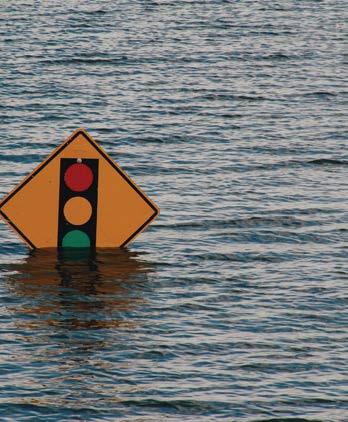
OVERVIEW:
Worldwide business conditions are creating a difficult environment across nearly every industry, including insurance. After emerging from the pandemic, the macro economy is tackling many issues, including inflationary pressures, along with increased interest rates, Hurricane Ian, and slowing supply chains.
Currently, hard insurance market conditions are not offsetting these challenges. In addition, the industry continues to be hampered by a talent shortage.
As complexities abound, insurance brokers and agents are increasingly relying on thought leadership from professionals across H.W. Kaufman Group. In this edition of Insurance Market Source, we offer counsel from our teams at Burns & Wilcox as well as within nearly every Kaufman company.
The issue provides an in-depth look at the significant losses that resulted when insureds were not equipped with the proper coverage solutions. Cautionary tales in areas such as Construction, Cyber, Transportation, Manufacturing and Personal Insurance point to why working with an expert becomes so vital in this environment.
Kaufman companies, including Burns & Wilcox, will continue prioritizing specialization and expertise. Clients consistently find value in our ongoing webinar series featuring Kaufman’s global expertise. Included are summaries of recent discussions from Burns & Wilcox teams focusing on Flood and Environmental coverage, along with Q&As with our professionals specializing in Architects & Engineers, Hospitality, Management and Cannabis.
We also spotlight emerging areas such as Cryptocurrency and explore how to mitigate risks in sectors such as Casualty, Construction, High-Value Homes, Residential and Healthcare.
The issue closes with an exclusive discussion featuring PGA golfer Max Homa, one of four Burns & Wilcox brand ambassadors. After finishing the 2022 season ranked fifth in the FedEx Cup standings, Max opened the new PGA Tour season with a victory at the Fortinet Championship in Napa, California. The conversation takes an in-depth look at how practice and preparation translate to winning on Tour. Max’s commitment to excellence mirrors our own and we are proud to have him on our winning team.
Coming off a record-setting year, our teams are committed to delivering the very best expertise and market access that clients require. We appreciate your ongoing partnership and remain steadfastly focused on long-term and sustainable success.
Alan Jay Kaufman

Chairman, President and CEO
H.W. Kaufman Group
SPECIAL
FALL/WINTER
220 Kaufman Financial Center 30833 Northwestern Highway Farmington Hills, MI 48334
248-932-9000
Attention: Marketing Department info@insurancemarketsource.com burnsandwilcox.com
FOUNDER
Herbert W. Kaufman
Alan Jay
H.W. Kaufman Group Chairman, President & CEO ajkaufman@hwkaufman.com
Steven D.
Richard Shipley
Corporate Vice President,
rwshipley@hwkaufman.com
Kelly
Senior Director,
keviviano@hwkaufman.com

Leah
lvsocia@hwkaufman.com
© 2022 H.W.
All
This
with
Jessica
Crain’s
Detroit,


Afire that destroyed much of a historic country club in Bloomfield Hills, Michigan, may have been started by construction work involving a propane torch, video footage suggests. The Feb. 17 blaze at Oakland Hills Country Club caused an estimated $80 million in damage to the clubhouse and was a near “total loss,” according to reports. Video recovered from the scene reportedly shows construction workers rebuilding a patio and using a propane torch against a wall to install rubberized flashing; shortly thereafter, workers saw smoke coming from the wall.
Built in 1922, the Oakland Hills clubhouse is the second-largest wood structure in Michigan and housed a significant number of invaluable golf history items — many of which were salvaged.


“It is obviously a very catastrophic loss, not just from the financial side but also the nostalgia and tradition,” said Aaron Pfister, Associate Managing Director, Underwriter, Commercial Insurance, Burns & Wilcox, Scottsdale, Arizona. “This is a very longstanding, iconic place in the southeast Michigan area.”
Officials said the construction workers seen in a surveillance video did not call 911 and may have believed they had only a small fire, which they attempted to put out with a garden hose. A full investigation could take up to a year, according to Oakland County Sheriff Mike Bouchard.
The construction company’s Commercial General Liability (CGL) Insurance would be critical in such a case, especially if it is determined that the workers caused the fire.

“It is immensely serious, and I think there could be a lot of liability lawsuits from this,” said Steven Hrab, Director, Construction, Burns & Wilcox, Toronto, Ontario. “I do not know that the average tradesperson or general contractor would even carry enough liability insurance to cover an $80 million loss.”
While no one was injured in the Oakland Hills Country Club blaze, fires in the U.S. caused 3,500 civilian deaths and 15,200 injuries in 2020, according to the National Fire Protection Association (NFPA).
In Winnipeg, Manitoba, an early February fire at a condominium construction site took more than 12 hours to extinguish. It destroyed the entire four-story building and damaged nearby structures, CBC News reported.
Fire is a serious risk in the construction industry, Hrab said, particularly when it comes to heat applications, such as the use of a propane torch seen in the Oakland Hills Country Club fire. In fact, some CGL Insurance carriers may even exclude these operations due to the fire risk involved or require contractors to monitor heat applications for a designated amount of time.
When a construction company faces a lawsuit over a fire, its CGL Insurance can help pay for third-party bodily injury expenses, such as medical costs, and third-party property damage. This type of policy is usually carried by the individual contractors on a job site as well as the general contractor overseeing the project, Hrab said. Some construction professionals will also carry Professional Liability Insurance, while the facility undergoing renovations should be covered by Builder’s Risk Insurance or Course of Construction Insurance, he said.
CGL Insurance can also cover third-party injuries that occur on a construction site, such as exposure to paint fumes, for example, or if someone gets hurt after accidentally entering a construction zone, Pfister said.
Worker injuries, meanwhile, would generally be covered by Workers’ Compensation Insurance, which cover medical bills, partial salary reimbursement, rehabilitation, or death benefits.
Construction defects that are found after a project is completed may also be covered under a company’s CGL Insurance. Construction defect laws vary by state, Pfister said.
“If a general contractor is building a new neighborhood, they will want to carry high limits of liability because if something is wrong with one home, something is likely to be wrong with all of them,” he said.
Excess Liability Insurance is an important consideration for construction companies and can offer limits above and beyond standard CGL Insurance policies. This is especially important for companies that work on high-value properties, where the potential for a major loss may be greater. If a company is responsible for a loss that exceeds their insurance limits, “it could bankrupt your company,” Pfister said.
WHY YOUR CLIENTS MIGHT NEED IT: Construction companies and construction-related industries should obtain CGL in the event of a fire or accident on a work site.
PROTECTS AGAINST: Structural/property damage, third-party injuries and construction defects.
LEARN MORE ABOUT THIS POLICY: Search “Construction” at burnsandwilcox.com or burnsandwilcox.ca.
— Aaron Pfister, Associate Managing Director, Underwriter, Commercial Insurance, Burns & Wilcox, Scottsdale, Arizona

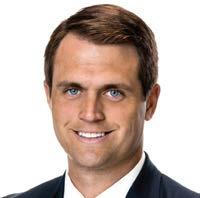
— Steven Hrab, Director, Construction, Burns & Wilcox, Toronto, Ontario
When reviewing an application for CGL Insurance, insurance carriers will typically want to know about the type of work a construction company performs, its most recent projects and its usual clients. Transparency is key during this process, Pfister said.
Insurance carriers will also want to know that the construction company is hiring experienced workers, Hrab said. “With any type of risk, getting the proper workers on the site is most important. That starts with the general contractor overseeing the project,” he said.
When seeking CGL Insurance, construction companies should verify that their business activities are covered by the policy, with no exclusions that could leave them with an uninsured loss, Pfister added. “Make sure there is nothing that is specifically excluded that could be in direct conflict to your operations,” he said.
Working with an insurance broker who specializes in the construction industry is also essential, Hrab said. “The experience level and the knowledge of the insurance professionals, from the broker to the underwriters, will also help protect your interests,” he said. ■
“It is obviously a very catastrophic loss, not just from the financial side but also the nostalgia and tradition. This is a very longstanding, iconic place in the southeast Michigan area.”
“The experience level and the knowledge of the insurance professionals, from the broker to the underwriters, will also help you protect your interests.”
Avirtual “try-on” tool for sunglasses offered by Louis Vuitton collected customers’ facial scan data without their consent, violating the Illinois Biometric Privacy Protection Act, a lawsuit against the luxury brand alleges. The proposed class-action suit, filed April 8, claims the LVMH corporation’s North America unit took biometric data from online shoppers when they used their webcams to try out eyewear products and then translated the data into computer code and sent it to an outside server, Bloomberg reported.
The lawsuit accuses Louis Vuitton of violating the privacy act “each and every time” a shopper in Illinois used the online try-on tool, according to reports. Violations of the Illinois Biometric Privacy Protection Act can carry fines of between $1,000 to $5,000 each.

“With a large, niche retailer that probably has plenty of traffic on their site, we could be talking about thousands of individuals affected,” said Ryan Ascenzo, Senior Broker, Professional Liability, Burns & Wilcox Brokerage, New York, New York. “The fines could be pretty substantial.”
These penalties are among the costs that can be covered by a retailer’s Cyber and Privacy Liability Insurance, which can respond to data breaches and cyberattacks and usually extends to violations of federal and state privacy laws.

“Companies have a responsibility to protect information that they are storing on their computer systems, and if they fail to do that, then the policy can help pay for those damages,” said Erica Rangel, Manager, Professional Liability, Burns & Wilcox, Chicago, Illinois.
Biometric data is growing at a rapid pace, with the global biometrics market expected to reach $44.1 billion by 2026, according to a study on the global biometrics industry released in February. A privacy study released in April by consumer website Comparitech noted increasing biometric use in many countries and ranked the U.S. among the worst-scoring countries for biometrics collection.

is growing at a rapid pace — yet
to use this technology are at risk for lawsuits
The U.S. Department of Homeland Security reports using biometrics to prevent illegal entry and enforce federal laws, among other uses, and the Canadian Broadcasting Corporation reported in January that Canadian officials were planning to use more facial recognition cameras to help speed up border crossings.
In the U.S., lawsuits that allege violations of the Illinois Biometric Privacy Protection Act are becoming more common, Bloomberg reported earlier this year. In February, McDonald’s agreed to pay up to $50 million to settle a lawsuit brought by employees in Illinois who claimed the company required them to submit biometric information without obtaining their consent.
Situations like the recent Louis Vuitton lawsuit over its virtual sunglasses try-on tool underscore the importance of notifying customers about data collection and managing the risks that come with it. “That could seem like a really innovative service to offer customers, especially in a low-touch environment during a pandemic, but someone should have realized this is information that is being stored and they could be liable for it,” Ascenzo said.
Beyond privacy concerns over a lack of consent for data collection, the greater risk is that the more personal data a company stores, the more damaging a potential cyberattack could be. “Hackers may want to get that biometric information because they could possibly use it to access a more secure, lucrative site,” he explained.
With facial scans and fingerprints giving many individuals access to their phones, bank accounts and even the workplaces, biometrics “could be the next wave of what cyber breaches are going to come to,” Rangel said. The more data we are providing, the more it can be manipulated and used against us.”
The potential liability companies face when collecting biometric data makes Cyber and Privacy Liability Insurance indispensable.
“From an insurance perspective, they definitely want to have a cyber policy in place,” Ascenzo said. “It can cover hiring an experienced cybersecurity attorney to settle the matter, or the costs associated with going to court. There is also the cost to notify those individuals that might be affected. Whether it was a breach or a violation of certain state or federal laws, working with an experienced cyber attorney can help them navigate this from a regulatory perspective.”
Depending on the circumstances, a company’s Directors & Officers (D&O) Insurance or Employment Practices Liability (EPL) Insurance could also be triggered by a biometrics-related lawsuit. For example, D&O Insurance can respond to allegations against a company’s board of directors over the decision to move into biometric applications, while EPL Insurance could respond to discrimination claims from employees or, in some cases, third parties.
While Cyber and Privacy Liability Insurance can cover regulatory fines, there may be specific limits for these penalties. “Working with an experienced broker to determine what you have available to comply with regulatory issues is important,” Ascenzo said.
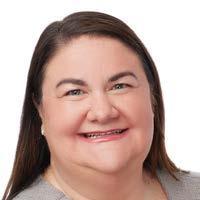
As debate continues over the use and regulation of biometric data, companies using biometric tools need to ensure they stay up
WHY YOUR CLIENTS MIGHT NEED IT: It is critical for companies launching a new product or application that involves biometric data capture — or when electronically storing customers’ personal information.
PROTECTS AGAINST: Data breaches, cybersecurity attacks and related lawsuits.
LEARN MORE ABOUT THIS POLICY: Search “Cyber and Privacy Liability” at burnsandwilcox.com or burnsandwilcox.ca.
— Ryan Ascenzo, Senior Broker, Professional Liability, Burns & Wilcox Brokerage, New York, New York

to date with the latest local and national regulations on it, Rangel pointed out.
They can also utilize the resources in their Cyber and Privacy Liability Insurance, including access to breach response coaches who can advise them on regulatory developments.
“Anytime a company is going to be launching a new product, feature, application or platform and there is the possibility of capturing any sort of data, they should talk it over with their internal risk management team, their external attorney, and ask if they need to be putting in any additional safeguards.” Ascenzo said.
“Anytime a company is going to be launching a new product, feature, application or platform and there is the possibility of capturing any sort of data, they should talk it over with their internal risk management team, their external attorney, and ask if they need to be putting in any additional safeguards.”
“[Biometrics] could be the next wave of what cyber breaches are going to come to. The more data we are providing, the more it can be manipulated and used against us.”
— Erica Rangel, Manager, Professional Liability, Burns & Wilcox, Chicago, Illinois


Amassive fire at a QVC warehouse in Rocky Mount, North Carolina, on Dec. 19, 2021 destroyed 75% of the 1.5 million-square-foot facility and killed one worker, according to news reports. The five-alarm blaze rendered the site inoperable and has reportedly prompted the company, a major employer in the area, to plan to lay off all of its more than 1,900 employees at the location starting Feb. 1.
In a release from QVC on April 6, the company pledged to compensate employees through the end of January 2022. According to a report from ABC11, WTVD-TV Raleigh-Durham, QVC does not plan to rebuild the facility.
Both incidents represent the type of natural disaster that can threaten life and property at large warehouses, which are in increasing demand. For these facilities, Commercial Property Insurance, Stock Throughput Insurance, Commercial General Liability (CGL) Insurance and other policies are of utmost importance.

“These types of events are exactly why companies have insurance,” said Barry Whitton, Managing Director, Broker, Property, Burns & Wilcox Brokerage, Atlanta, Georgia. “It is a catastrophic event; one is a fire, one is from nature. There is not a lot you can do to prevent many of these.”
Warehouses face multiple perils, particularly as severe weather events increase






Fires and severe weather events are among the top property risks facing warehouses, said Leena Malik, Senior Underwriter, Commercial Insurance, Burns & Wilcox, Toronto, Ontario.
“The number one peril for any sort of storage or warehousing facility would be fire,” Malik said. “Even a small flame can result in quite a devastating loss.”
Commercial Property Insurance can cover losses related to natural disasters, fire, wind, collapse, hail, explosion and other perils. Covered expenses may include physical property repairs, business contents, damaged goods and, in some cases, loss of income. CGL Insurance would be needed to cover expenses related to third-party injuries or property damage, and Workers’ Compensation Insurance could respond to worker injuries.
“There are very few buildings that are actually constructed to be able to take a direct hit from an EF-3 or worse tornado because the wind speeds are just so severe,” said Brendan Cook, Vice President, Managing Director, RB Jones, Property, New York, New York. “The cost to build structures to withstand those storms is quite significant and tornadoes can be relatively random.”
Most warehouses “are built very well” and could be safer than other structures during a storm, Whitton said, adding that weather risks tend to be unavoidable since warehouses are often located where they are most geographically needed.
Stock Throughput Insurance could also help protect warehouse owners from losses, Cook added. “That could cover an item from the moment it is manufactured, through transit from the manufacturing location to the intermediate distribution channel, and ultimately to the final purchaser, whether that shipment is by ocean or by rail,” he explained.
Alongside natural disasters like wildfire and tornados, manmade perils like theft are another concern, Malik said. Thefts, whether perpetrated by warehouse visitors or employees, could also be covered by Commercial Property Insurance.
“When you have warehouses storing hundreds of thousands of dollars of goods, you always have that risk, especially if there is not proper record-keeping of who is entering which storage unit and which particular time,” she said. “That is something policy holders need to review with their broker, to ensure they have correct coverage in place.”
Major retailers are increasingly opting to own their own warehouses, the Wall Street Journal reported in October 2021. In Burnaby, British Columbia, a 65-acre business park is being developed that will offer a combined total floor area of 1.3 million square feet and will be occupied in part by Amazon, which will use over 500,000 square feet, Daily Hive reported.
In March 2021, a warehouse fire in Waikapu, Maui, caused an estimated $1 million in damage, including $466,000 in damage to the 2,240-square-foot facility and $500,000 in lost contents, the Honolulu Star-Advertiser reported.
“Demand for private storage facilities is also increasing as well,” Malik said. “When you have two or three warehouses on the same street, all of those risks are subject to one another.”
In exceptionally large warehouses like the Amazon and QVC facilities, Cook said, the “pure aggregation of values of a single site” is a major consideration for Commercial Property Insurance purposes.

Distribution networks have become even more robust over the past two to three years, Whitton added, making larger, single warehouses using distribution hub networks more common.
After a loss occurs, a warehouse owner may need to begin storing products elsewhere during rebuilding, which could be covered by Commercial Property Insurance.
When the cost or time required to rebuild a warehouse on the same site is too much, a warehouse owner may choose to permanently shut down the site, as in the recent QVC incident, Whitton said.
“The employees could have lost their home from the same event, and now they are losing their job,” Cook said. “The social impact on a region can be severe.”
When a warehouse is inoperable due to weather damage or another covered event, Commercial Property Insurance may be able to help with the loss of revenue while repairs are made.
Lost revenue can be exacerbated when a loss occurs at a challenging time, such as the holiday rush.
In certain industries, such as fashion, a warehouse loss and the subsequent delays could mean missing industry trends. “The loss of customers and the delay of service to customers is something they may not have insurance coverage for, so that is a business risk,” Cook said.
Warehouse owners may also want to ask their insurance
WHY YOUR CLIENTS MIGHT NEED IT: In the event of a fire or natural disaster that impacts a business’s property.
PROTECTS AGAINST: Damage or destruction of property and goods due to a natural disaster, theft, or loss of income.
LEARN MORE ABOUT THIS POLICY: Search “Commercial Property Insurance” at burnsandwilcox.com or burnsandwilcox.ca.
— Barry Whitton, Managing Director, Broker, Property, Burns & Wilcox Brokerage, Atlanta, Georgia
— Leena Malik, Senior Underwriter, Commercial Insurance, Burns & Wilcox, Toronto, Ontario

— Brendan Cook, Vice President, Managing Director, RB Jones, Property, New York, New York

broker about Inland Marine Insurance, Flood Insurance and other policies.
Risk management procedures should also be reviewed regularly, Malik added. This should include employee safety and emergency preparedness training, regular warehouse inspections, monitored alarms, and sprinkler systems.
If the cost of insuring a warehouse is a concern, “speak to your insurance broker,” Malik recommended. ■
“These types of events are exactly why companies have insurance. It is a catastrophic event; one is a fire, one is from nature. There is not a lot you can do to prevent many of these.”
“The number one peril for any sort of storage or warehousing facility would be fire. Even a small flame can result in quite a devastating loss.”
“Even warehouses built to the highest standards cannot usually withstand the impact of a severe weather event.”
Three monkeys were found and euthanized after escaping from the scene of an accident in Danville, Pennsylvania, on Jan. 21 when a dump truck collided with a pickup hauling 100 monkeys in an enclosed trailer. The cynomolgus macaque monkeys had just been flown in from the island nation of Mauritius and were headed to a CDC-approved quarantine facility when the accident occurred, tearing off the trailer’s back panel and spilling crates onto the highway. Three monkeys escaped and at least one was missing for several hours while officials searched for the animal and urged the public to keep their distance if they spotted it.

The escaped monkeys posed a health risk to the public and had to be euthanized upon their capture, CDC officials said Jan. 23. These particular monkeys are reportedly in high demand for research and valued at up to $10,000 each, underscoring the high potential cost of such an incident and the need for appropriate insurance coverage.
“Without proper insurance, a loss like this could be devastating for a business owner,” said John Woods, Vice President, National Practice Group Leader, Transportation, Burns & Wilcox, Scottsdale, Arizona.
Despite the story’s outlandish nature, it is a very real example of the risks involved with hauling wildlife of any kind, said John Gambino, Cargo Manager, RB Jones, Marine, New York, New York.

Aside from auto accidents, other major risks when transporting wildlife include harm to the animals due to movement in the trailer, temperature issues, mechanical breakdown, theft, and severe weather. Whether it is monkeys and other exotic animals or livestock, transit firms need to take specific safety precautions based on the animals they are hauling and also need to carry Animal Motor Truck Cargo Insurance, which can cover damage to cargo after an incident occurs.
When an animal is injured or dies in transit, “there would likely be an insurance claim based on the value of the animal,” said John McGlynn, Director, Transportation, Burns & Wilcox, Toronto, Ontario.
While Animal Motor Truck Cargo Insurance policies can protect the value of the cargo itself, potential liability for third-party injuries or property damage caused by the animals while in a transit firm’s custody is another significant concern.

Hauling wildlife of any kind poses risks for animals, humans alike
On Jan. 24, WBRE/WYOU in Pennsylvania reported that a woman who responded to the recent monkey accident as a good Samaritan was exposed to one of the escaped monkeys. Medical expenses and other third-party injury costs can generally be covered by a company’s Truckers General Liability Insurance.
“If the monkey were to cause damage or health problems to a third party, there is liability aside from the value of the monkey that could arise from negligence,” McGlynn said. “It is unclear who that liability might rest with; one might argue the trucking operation, or the corporation or legal entity transporting the monkeys.”
“They really need to have a Truckers General Liability Insurance policy, and maybe even Excess Liability Insurance, in the event someone contracts a disease and you end up with a very high jury award,” he said.
WHY YOUR CLIENTS MIGHT NEED IT: In the event of transporting cargo, especially in circumstances of transporting animals or livestock.
PROTECTS AGAINST: Auto accidents, damage to cargo due to movement in the trailer, theft, severe weather, death of wildlife and damage to a third-party or property.
LEARN MORE ABOUT THIS POLICY: Search “Transportation” at burnsandwilcox.com or burnsandwilcox.ca.
In September of 2020, a live export ship traveling from New Zealand to China sank after capsizing in rough seas, killing 40 crew members and about 6,000 cattle, according to a Forbes report. This type of tragic incident is part of why fewer insurance carriers are willing to get involved in certain animal transportation risks, Gambino said.
“You not only have the animal rights issues, but is it something an insurance company will want to underwrite?” he said. “It is also generally true that in the entire Cargo Insurance industry, an underwriter will usually prefer air shipments to ocean shipments, because there is less chance of theft and other perils.”
In Columbia Valley, British Columbia, on Oct. 31, 2021, a livestock transport truck ran off the road while hauling over 200 pigs, killing about 25% of the animals and leaving many others roaming the street, according to an article in the Columbia Valley Pioneer. Animal Motor Truck Cargo Insurance can cover the value of animals injured, killed or lost, along with other related expenses such as debris cleanup and search efforts to find missing livestock, Woods said.
In the recent lab monkey accident, the value of the monkeys alone “could be anywhere from $50,000 to $100,000, plus you have the cost of going out and searching for them,” Woods said.
Other covered expenses for Animal Motor Truck Cargo Insurance may include cargo damage due to breakdown of a trailer’s temperature controls, and cargo that is refused due to transit delays.
It is important to know that standard Motor Truck Cargo Insurance policies will typically not cover animals. Even with Animal Motor Truck Cargo Insurance, companies will need to ensure that the specific animal they are hauling is covered, Woods said.
Usually, the company that owns the cargo will require the trucker to take out this type of insurance policy. Less often, the organization itself will purchase Stock Throughput Insurance, which can cover goods at all stages of the transit process until it reaches its final destination.
In the transportation industry, a shortage of drivers is making all areas of business more difficult. In November, one report estimated that the U.S. trucking industry is short around 80,000 drivers, according to the New York Times.
— John McGlynn, Director, Transportation, Burns & Wilcox, Toronto, Ontario
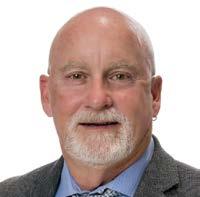
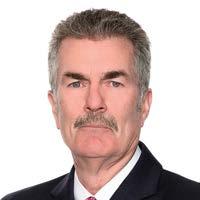
— John Gambino, Cargo Manager, RB Jones, Marine, New York, New York

— John Woods, Vice President, National Practice Group Leader, Transportation, Burns & Wilcox, Scottsdale, Arizona
These conditions make proper risk management even more important for trucking operations. Depending on the insurance carrier, training courses may be offered to help transportation companies implement best practices for avoiding accidents.
Talk to your transportation broker and lawyers about “the risks associated with hauling cargo and whether the coverages are appropriate for the activities of your business,” McGlynn said.
“If the monkey were to cause damage or health problems to a third party, there is liability aside from the value of the monkey that could arise from negligence.”
“You not only have the animal rights issues, but is it something an insurance company will want to underwrite?”
“[The value of the monkeys alone] could be anywhere from $50,000 to $100,000, plus you have the cost of going out and searching for them.”
Expenses such as debris removal, search efforts can ‘add up very, quickly’
Across the U.S., home prices soared so high in some areas that priced-out residents moved to regions with a lower cost of living, Fox Business reported in March of 2022.
“It is good for homeowners and bad for those who are buying,” said Pamela Alphabet, Regional Practice Group Leader, Personal Insurance, Burns & Wilcox, Scottsdale, Arizona.


When values are high, homeowners could be at higher risk for being underinsured on their Homeowners Insurance, said Anella Niewenhous, Associate Vice President, Regional Practice Group Leader, Personal Insurance, Burns & Wilcox, Morehead City, North Carolina.

“This brings to light the difference between market value and replacement costs, because what you pay for a home is not exactly what it costs to rebuild it,” she said.



Over half of U.S. homes sold in January were purchased for more than their list price, according to the Associated Press. Regardless of the price a buyer pays for a home, however, the most important factor for Homeowners Insurance is the amount it would cost to rebuild the home, Niewenhous pointed out.
“If the house was to burn down tomorrow and you had to rebuild it with the same or like materials, that is the rebuilding cost,” she
said. “We have seen some cases where what you are paying for a house may not be what it is insured for. You could be overpaying for a house or have it insured for less than what you paid for it because of the supply and demand in real estate right now.”
The same principle could also apply in the opposite direction, Niewenhous said. “You could buy a house for $1.2 million, and then you get your insurance inspection done and they could tell you that it should be insured for $1.7 million,” she said. “What you are buying the house for has nothing to do with what it costs to rebuild it in the event there is a claim.”
Without the correct rebuilding cost on a Homeowners Insurance policy, a homeowner who has a loss could have to pay out of pocket for the gap or accept a lower standard of building materials when repairs are made. To avoid this, all homeowners should review their Homeowners Insurance with their broker at least annually, Niewenhous recommended.
“Once a year, you should evaluate your insurance coverages with your broker around the time of a renewal and make sure you are in the right ballpark,” she said. “If you were insured at $250,000 five years ago, what $250,000 would get you five years ago versus today are two very different things.”
Another impact of rising home prices could be a surge in remodeling projects among homeowners. In the second quarter of 2021, one Canadian lender reported a 30% uptick in home renovation loan applications compared to the first quarter of 2021, BusinessWire reported. More U.S. homeowners are taking on renovations, as well, with a recent LightStream survey showing that 44% of homeowners are planning home projects in 2022 versus 39% in 2021.
For an expanding number of homeowners, these projects could include efforts to “go green,” like installing solar panels.
The panels will usually need to be permanently attached to the roof to be covered as part of the dwelling on a Homeowners Insurance policy, Alphabet said. Homeowners should also check whether their insurance carrier has any limitations on solar panel coverage.
“Homeowners really need to do their research and make sure they find a reputable company to install the solar panels,” Alphabet said. “They should also increase their Homeowners Insurance coverage, because adding solar panels does increase the value of your home.”
Before beginning work on a home renovation project, homeowners should speak with their insurance broker to find out whether they need Course of Construction Insurance or Builder’s Risk Insurance, which can help protect the home while it is under construction, Alphabet said.
“You also want to make sure that the workers are insured, because if not, you are going to be liable for them on your property,” she said. “There is also the risk of theft of building materials.”
While most homeowners understand the importance of Homeowners Insurance in covering property damage and liability claims, the role of valuations and rebuilding costs is an aspect of the policy that is often misunderstood, Niewenhous said.
WHY YOUR CLIENTS MIGHT NEED IT: Homeowners Insurance is key for any homeowner; reviewing the policy annually with an experienced broker is highly recommended to adjust for estimated costs of building materials in the event of a loss, or in the event of making significant home upgrades.
PROTECTS AGAINST: Costs associated with a loss, including rebuilding costs, in addition to renovation or installation costs.
LEARN MORE ABOUT THIS POLICY: Search “Residential Property” at burnsandwilcox.com or burnsandwilcox.ca.
“If you were insured at $250,000 five years ago, what $250,000 would get you five years ago versus today are two very different things. That refrigerator that cost $1,000 could now be $2,500.”
— Anella Niewenhous, Associate Vice President, Regional Practice Group Leader, Personal Insurance, Burns & Wilcox, Morehead City, North Carolina
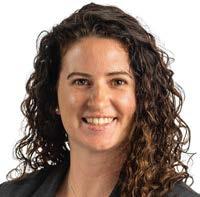
— Pamela Alphabet, Regional Practice Group Leader, Personal Insurance, Burns & Wilcox, Scottsdale, Arizona

“Replacement cost is to get you whole again,” she said. “That is the whole point of insurance; to make you whole in the event of a loss. It can be a difficult thing for homeowners to understand and a good retail broker should be able to explain it.”
When reviewing your Homeowners Insurance policy each year, be prepared to discuss any updates or additions to your home. Even smaller upgrades can affect the value and cost to rebuild, Niewenhous said.
That review process is critical, as it gives homeowners a chance to avoid the distress of an underinsured loss, Alphabet said. “A lot of homeowners renovate their kitchen or bathroom assuming they will make that investment back and then some, but if they are not insuring them, nobody is going to know that,” she said. ■
“Homeowners really need to do their research and make sure they find a reputable company to install the solar panels. They should also increase their Homeowners Insurance coverage, because adding solar panels does increase the value of your home.”
Cryptocurrency risk is on the rise—creating a growing demand for insurance that can protect cryptocurrency exposures, DeFi, and blockchain exposures as the ecosystem becomes increasingly popular. Businesses need innovative solutions to help mitigate the perils associated with smart contract failures, mining, theft of digital assets, and many of the risks that come from operating within this unique industry. Here’s what you need to know to help ensure your clients have the right coverages and proper limits.
Cryptocurrency is a form of currency that exists digitally or virtually—Bitcoin being most known as the reigning king.
Digital assets in the cryptocurrency market have seen explosive growth surpassing $3 trillion in market capitalization at its peak in 2021.
40 million Americans, or 16% of U.S. adults, say they have invested in cryptocurrencies.
In Canada, cryptocurrency ownership grew from 3% to 14%.
Tesla, Square and Coinbase have made crypto investments totaling hundreds of millions of dollars.
Burns & Wilcox has the expertise within the cryptocurrency environment, including blockchain, decentralized finance, smart contracts and more. Our knowledge, paired with our excellent relationships with carriers, allows us to identify needed specialty insurance solutions in areas such as Technology E&O, D&O, Cyber Liability, and crime coverage for wallets. Learn more at BurnsandWilcox.com

A leading cryptocurrency exchange announced 483 users were affected by a hack that caused $35 million in unauthorized withdrawals.
Cyber & Privacy Liability Insurance offers companies affected by a cryptocurrency security incident access to a cybersecurity team, legal counsel, and coverage for losses.
Technology E&O Insurance is critical to help cover financial losses resulting from negligent design or an error in tech.
Directors & Officers Insurance can provide individual protection to board members and companies in the event of a lawsuit.
There have been over $1.2 billion in overall cryptocurrency losses in the first three months of 2022. The fluctuating value of cryptocurrency can lead to overnight double-digit increases or decreases in value. Bitcoin once saw prices fall by 75% to below $4,000.
Broker, Commercial Insurance , Denver, Colorado; National Product Leader, Cannabis, Burns & Wilcox , Philadelphia, Pennsylvania
WHY YOUR CLIENTS MIGHT NEED IT: Vandalism and theft are just a couple examples of recent challenges in the cannabis market. Cannabis businesses are at risk for devastating financial losses if they do not have proper coverage.
PROTECTS AGAINST: Potential losses associated with theft, disasters, product issues and cyberattacks, for example.
Varying state regulations and a heightened risk of theft and vandalism are among ongoing challenges in the booming cannabis industry. To learn more about Cannabis Insurance, Crain’s Content Studio spoke with Emily McDaniel, Broker, Commercial Insurance, Burns & Wilcox, Denver, Colorado, and Jason Scheurle, National Product Leader, Cannabis, Burns & Wilcox, based in Philadelphia, PA.
What are some of the greatest risks today in the cannabis industry?
McDaniel: When newer companies are getting into the marketplace, the greatest risk is a lack of expertise or not knowing the potential pitfalls of operating a cannabis business. This could mean gaps in coverage and the potential for costly claims against them as a business that, financially, they might not be able to recover from. For an entrepreneur, insurance is often the last thing on their mind. If they are just trying to check the box to get their license to become operational, they might not be contemplating the risk.
Scheurle: Tracking the different compliance matters across different jurisdictions is a real challenge; it is different in every state. As these new companies are coming in, are they aware of the different compliance matters in New Mexico versus Massachusetts, for example? That can lead to claims and, in the event of a claim, possible coverage issues or invalid coverage.
What should cannabis business owners be aware of relative to these risks?
Scheurle: Knowing and understanding the compliance in their state of operation is important. They should be aware of all safeguard requirements that their insurance policy may have, as well. Be familiar with the
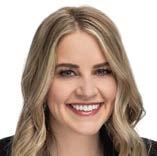
LEARN MORE ABOUT THIS POLICY: Search “Cannabis” at burnsandwilcox.com or burnsandwilcox.ca.
“Knowing and understanding the compliance in their state of operation is important. They should be aware of all safeguard requirements that their insurance policy may have, as well.”
— Jason Scheurle, National Product Leader, Cannabis, Burns & Wilcox , Philadelphia, Pennsylvania
alarms you need, video monitoring, and the security measures that must be in place, and ensuring those systems are always operational. If they are not, may find yourself in a situation where coverage is precluded and cannot recover from a loss.
McDaniel: Cannabis businesses should be going to specialists for everything they do, including insurance, accounting practices and legal advice. A dispensary is not going to be able to use the same insurance broker, accountant or attorney as a bakery or other general business.

Which insurance policies can help cannabis businesses respond to these threats?
McDaniel: Commercial General Liability (CGL) Insurance can help with incidents that happen on their premises. Products Liability Insurance is usually excluded on CGL Insurance unless it is specifically purchased, and that would protect the company from a claim against it from products they are selling, manufacturing, or distributing. Those claims can be costly and devastating to a company. If they do not have Commercial Property Insurance in the event of a fire, tornado, or theft, they may not have the capital to recover from a loss and become operational with minimal down time. Cyber & Privacy Liability Insurance is
also important, as these businesses have personal information about their customers and they need to protect themselves in the event of a data breach. Errors & Omissions Insurance or Professional Liability Insurance may also be needed for those that have a professional exposure.
Scheurle: Ancillary coverages cannabis businesses could need include Cargo or In-Transit Insurance for product that is being delivered or shipped, and cash being taken to the bank or moved around. That is certainly an area we get a lot of questions on. Another would be Crop Insurance, or coverage for a living plant that’s growing and has not yet been harvested.
What services of Cannabis Insurance are specific to Burns & Wilcox and what are the advantages of these?
Scheurle: Burns & Wilcox and H.W. Kaufman Group’s nationwide reach is top of the line. Our relationships with national retail partners and everybody we work with means things can be done quickly and efficiently. That nationwide grasp can help to speed up the process for sure.
McDaniel: The expertise does set us apart. Being able to have nationwide reach and specialists that can write cannabis coverage in many states is unique.
■

















WHY YOUR CLIENTS MIGHT NEED IT: Provides financial protection against alleged professional negligence and also includes coverage for directly related bodily injury and property damage.
PROTECTS AGAINST: A range of legal, property- and injury-related exposures, including those resulting from the design professional’s negligence or error. Includes financial restitution for costs related to legal defense, material defects, bodily injury and property damage.
LEARN MORE ABOUT THIS POLICY: Search “Architects and Engineers” at burnsandwilcox.com or burnsandwilcox.ca.
Design errors & omissions and evolving technology are among the most pressing challenges faced by today’s architects, engineers, general contractors, and other design professionals. To learn more about their need for Architects & Engineers Insurance, we spoke with Tameka Livatino, Underwriting Director, Professional Liability, Burns & Wilcox, Chicago, Illinois.
What are some of the greatest risks facing architects and engineers today?
T.L.: Design flaws have always been and always will be the greatest risk of an architecture and engineering firm. Other risks include cost overruns and reliance on technology platforms to perform professional services. Oftentimes, design platforms are created by others and relied upon by design professionals. If there is a problem with a project, there could be a question about whether it was caused by the project design itself or the technology. In addition, in this current age of inflation, material costs and the speed of delivery are coming more into play as a challenge. What insurance policies can help architects and engineers respond to these threats?
T.L.: Architects & Engineers Professional Liability Insurance, polices have many layers of coverage that can respond to these threats. There is always going to be a bare-bones policy form, so the insured,
“You get what you pay for, and that holds true for these policies.
There are a lot of additional expenses that go with an errors and omissions claim that a firm would benefit from having covered.
If they are not relieved of certain claim expenses, it could be detrimental to their operations, especially for a smaller firm.”
broker and/or retailer should be looking for key coverage parts. For example, whether there is technology coverage, coverage for independent contractors, and cyber and privacy liability coverage. I think those are critical when reviewing and deciding on an Architects & Engineers Professional Liability Insurance policy. You get what you pay for, and that holds true for these policies. There are a lot of additional expenses that go with an errors and omissions claim that a firm would benefit from having covered. If they are not relieved of certain claim expenses, it could be detrimental to their operations, especially for a smaller firm. They also want to look at things like faulty workmanship, which is a critical part of covering the gap between Professional Liability Insurance and Commercial General Liability (CGL) Insurance for a contractor and other supplementary payments. There is currently an increased demand on policy limits, as well, and even smaller firms are being asked to carry very high limits, so Excess Liability Insurance may be needed.
T.L.: A lot of artisan trade contractors are now being required to carry Professional Liability Insurance, whereas CGL Insurance was the focus previously. Brokers who sell CGL Insurance, in particular, have a great opportunity to cross-sell a Professional Liability Insurance policy to cover the gaps. What services of Architects & Engineers Insurance are specific to Burns & Wilcox?
T.L.: Burns & Wilcox has access to many markets, including an in-house facility that can provide a broad suite of coverage enhancements. This in-house program has coverage features from errors and omissions to technology, technology products, and cyber, with various supplementary payments available. The exclusivity of the program provides the ability for Burns & Wilcox to obtain more tailored coverage for the client.
■











WHY YOUR CLIENTS MIGHT NEED IT: Restaurant owners and individuals in the hospitality industry should consider their assets, know their potential risks, and always protect staff and customers.
PROTECTS AGAINST: Potential losses associated with kitchen fires, food spoilage, cybersecurity, delivery services, physical injuries, weather damage and liquor liability, for example.
LEARN MORE ABOUT THIS POLICY: Search “Hospitality” at burnsandwilcox.com or burnsandwilcox.ca.
Businesses in the hospitality industry face a variety of property and liability risks. To learn more about these challenges and the corresponding insurance solutions, Crain’s Content Studio spoke with Bonnie Steen, Vice President, Managing Director, Burns & Wilcox, New Orleans, Louisiana.
What are some of the greatest risks today for restaurant hospitality businesses?
B.S.: From a property standpoint, one of the biggest risks for restaurants is going to be a fire loss in the kitchen. Depending on how bad the fire is, you might even have loss of business income if you are not able to open back up quickly. If you have customers who are injured due to the fire, perhaps by smoke inhalation or falling during an emergency exit situation, you could have a liability claim as well.
If you have a storm, lose power, and cannot open for a week, you could have a food spoilage claim. From a liability standpoint, a customer could get sick from eating spoiled food, break a tooth on food, or have a slip-and-fall claim because of water or spilled food on the floor, for example. There are also risks associated with cybersecurity, delivery services, staff injuries, and liquor liability.
What should business owners be aware of relative to these risks?
B.S.: Working with their insurance agents, they need to identify potential
“You always have to protect your assets. Maybe a restaurant has $200,000 worth of wine — the restaurant either should not buy that amount of wine, or it needs to be properly insured.”
— Bonnie Steen, Vice President, Managing Director, Burns & Wilcox, New Orleans, Louisiana
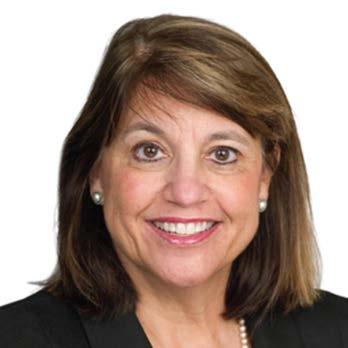
exposures that could cause them a financial lost. They then need to determine what exposures they want to transfer to an insurance policy, to retain, and or to avoid. Which insurance policies can help them respond to these threats?
B.S. : Commercial Property Insurance can cover fire, wind and hail, vehicle damage, vandalism, smoke, explosions and other perils. Insureds should be sure to buy insurance to cover a potential loss from food spoilage and loss of business income. Other policies include Commercial General Liability (CGL) Insurance, Hired and NonOwned Vehicle Insurance, Liquor Liability Insurance, Excess Liability Insurance, Employee Dishonesty Insurance, Cyber & Privacy Liability Insurance, Workers Compensation Insurance, and more.
What steps can businesses take to complement their insurance coverage from a prevention standpoint?
B.S.: Businesses should be ready for an on-site or virtual inspection. When you buy insurance, often you will get a loss control specialist to examine your risk and make
recommendations to either eliminate or lessen a loss. Burns & Wilcox has a sister organization, Afirm, that specializes in risk mitigation, loss control and premium audits.
Can you share an example of a scenario you have dealt with that would be illustrative of the types of risk we have been discussing?
B.S.: I encountered a restaurant that experienced a major cybersecurity breach. The waitstaff would take the customer’s credit card and ring it through in the back, and one of the staff had a card reader in their pocket. It was a significant loss — over $300,000 — and they did not have Cyber & Privacy Liability Insurance in place. Uninsured losses like this could possibly shut down a business.
What advice would you give brokers to increase their success rates with these products?
B.S.: If you have a chance to get involved with a restaurant association, that is a great opportunity. Get in front of owners at conferences or take ads out in their newsletters. Working with an E&S wholesale partner, like Burns & Wilcox, who has access to those markets is key. ■
Broker, Professional Liability, Burns & Wilcox, San Diego, California Management Liability Insurance
WHY YOUR CLIENTS MIGHT NEED IT: Companies face numerous management liability risks from employees, shareholders, creditors, competitors, vendors, customers, and regulators.
PROTECTS AGAINST: Lawsuits related to employment practices, such as wrongful termination, discrimination and harassment, wage and hour lawsuits and lawsuits regarding Covid vaccination policies.
LEARN MORE ABOUT THIS POLICY: Search “Management Liability” at burnsandwilcox.com or burnsandwilcox.ca.
Wrongful termination allegations and shareholder lawsuits are among the numerous management liability risks companies may encounter. To learn more about these challenges and the corresponding insurance solutions, Crain’s Content Studio spoke with Marvin Cigarroa, Broker, Professional Liability, Burns & Wilcox, San Diego, California.
What are some of the greatest management liability risks companies face today?
M.C.: The management liability risks that companies face today come from numerous sources: employees, shareholders, creditors, competitors, vendors, customers, and regulators. The greatest exposure from employees is an employment practices wrongful act lawsuit — whether it is wrongful termination, discrimination, harassment, etc. These lawsuits are costly to settle, and defense costs can quickly add up even for a claim with no merit. Employment Practices Liability (EPL) Insurance policies are designed to respond to these types of claims and cover both settlement and legal defense costs.
Which insurance policies can help them respond to these threats?
M.C.: The two primary policies that help respond to these risks are Directors & Officers Liability (D&O) Insurance and EPL Insurance. They can be purchased together as a package policy with or without shared limits, or they can purchase only one or the other. Fiduciary Liability is a related policy coverage that can
“Termination activity, whether voluntary or involuntary, tends to be a trigger for employment claims. D&O Insurance has also been impacted primarily from a bankruptcy perspective, as many companies were unable to stay in business during the shutdowns.”
— Marvin Cigarroa, Broker, Professional Liability, Burns & Wilcox, San Diego, California
usually be purchased together with D&O and EPL Insurance, for those companies that sponsor a pension plan and/or defined contribution plan like a 401(k). The limits purchased by an insured will depend on its revenue and asset size, risk tolerance, and specific exposures. It is important to keep in mind that these policies provide coverage for both settlement and defense costs, with defense costs typically included within the limit of liability. For this reason, the insured should factor in limits erosion from defense costs when determining the appropriate limit to purchase, or the amount they would like to have available for settlements.
M.C.: On EPL Insurance specifically, an insured should look to confirm the coverage available for Wage & Hour claims. These claims can impact most businesses but are more prevalent in industry classes with a higher percentage of hourly employees, like hospitality and retail. These claims allege that the insured has violated Wage & Hour laws regarding issues like meal breaks and overtime pay. They also deal with the
misclassification of employees as exempt hourly employees and vice versa. Wage & Hour Claim endorsements will provide the insured coverage for defense costs for these types of claims, usually at a lower sublimit amount.
M.C.: I believe that many brokers hesitate to get into Management Liability Insurance products because they simply are not as familiar or comfortable with the coverages. In those cases, I would first recommend that they look to partner with a Burns & Wilcox professional broker that can help them better understand and guide them in this area.

What features of Management Liability Insurance are specific to Burns & Wilcox?
M.C.: Burns & Wilcox has dedicated professional brokers that specialize in Management Liability, Professional Liability/ E&O, and Cyber. It is advantageous to have brokers that specialize in Management Liability, given the various coverage issues that arise in these product lines. ■






The U.S. Flood insurance market is being completely revamped with the launch of the National Flood Insurance Program’s (NFIP) risk rating 2.0, which applies risk modeling technology to evaluate exposure. Simultaneously the market is challenged by double-digit inflationary percentage increases, and the adverse impact of climate change leading to warmer ocean temperatures and more severe catastrophic storms.
Assessing flood risk has significantly changed over the last 10 years, the experts said, and risk rating 2.0 is a move closer to the methods and resolutions that are used in flood models.
In a webinar hosted by Burns & Wilcox and moderated by Brad Turner, Associate Vice President, National Product Manager, Flood, Burns & Wilcox, Morehead City, North Carolina, experts discuss key trends significantly impacting the private flood market at present.



FEMA flood maps that have been used for decades are not keeping pace with the evolving flood exposure in the U.S. Earlier this year Nature Climate Change released a study projecting that the number of people in the U.S. who are exposed to flooding will almost double over the next 30 years, largely because of population growth and construction in areas already prone to flooding.
FEMA has implemented additional flood rating parameters that includes topographical variance at a specific GPS location, estimated first floor elevations, water return levels, and reconstruction valuations. This data is being used to update NFIP’s risk rating methodology (NFIP 2.0).
A key part of accurate evaluations lies in the underwriting process, panelists said. Frequently, the flood limit is lower than the full value of the property. The London markets, for example, are directing capacity to partners that align critical investments with robust risk analysis. They are able to geocode the risk, establish the innovation and data, and look at what the exposure potential is.
A total of $18 billion in flood losses ($80 billion worldwide) occurred in the U.S. 2010-2020, which after inflation still doubled the claims from the previous decade.
Burns & Wilcox supports its brokers and agents with private market insurance options for residential and commercial properties. NFIP often will fail to cover added features like finished basements or fully cover additional buildings, or custom building features and materials.

Insurance Journal reported that just 30 percent of insurance policies had updated replacement costs less than a year ago since the start of the pandemic, said Sarah Chandonnet, Manager, Private Client, Burns & Wilcox , Detroit/Farmington Hills, Michigan.
“The cost of building materials has gone up, and during COVID, many people were renovating their homes,” Chandonnet said. “It’s important that our agents are talking with insureds and clients to make sure they are covered properly. If not, there’s going to be a huge gap in coverage.”
As brokers and agents work with their clients to provide full flood coverage, here is what the future likely holds:
• Refinement in flood modeling continues — Newer technologies like LIDAR can more effectively measure ground
–Sarah Chandonnet, Manager, Private Client, Burns & Wilcox, Detroit/Farmington Hills, Michigan
elevation and input other factors that modernize the definition of today’s flood risks.
• Capacity is a challenge — Expertise and quality matters.
• Speed matters — Flood risk must be quickly analyzed so that comparisons can be accurately made to the existing portfolio.
• Affordability is an issue — More accurate modeling will support consistent pricing but premium and renewals will remain high in the short-term.
• Full coverage is paramount — The goal of insurance is to make the client whole again.
More risks will likely be shopped in the private flood market — Private markets can typically offer more coverage inclusions and expanded risk limits.
Proper Indemnity relies on communication and consistent evaluation of the exposure over time — Clients will need to know their options, and additional coverages are often required. ■
“It’s important that our agents are talking with insureds and clients to make sure they are covered properly. If not, there’s going to be a huge gap in coverage.”

While the Energy insurance industry remains in a hard market, much has changed in the last 12 months. Global oil production and consumption has climbed to pre-pandemic levels, and rig activity is up significantly. Most oil producers are no longer straddling the line of profitability even as investments and expectations for environmental social governance (ESG) programs grow.
In a webinar hosted by Burns & Wilcox and moderated by Gina Jones, Vice President, Director, Environmental Programs, Burns & Wilcox, Denver, Colorado, discuss how uncertainties remain even as the momentum for a tight market is slowing in the Energy sector. Some carriers have pulled out of specific oil and gas classes, or altogether in energy sectors, but increased production and profits mean others have broadened their appetites for new exposures.
Most contractors working within the oil industry are on rigs, and activity is booming. The U.S. has increased its rig count by 270 year-over-year as of June 2022 and that number is expected to rise. Canada has added 40 new working rigs and the rest of the world 67 more during the same time period, leading to more private capital and investments.
“[Increased rig count] is probably the most pointed indicator as to the health of the industry,” said Brad Nehring, Director, Energy, RB Jones, Marine & Energy, Houston, Texas.

Increasing demand and limited supply, largely because of the war in Europe, is behind these trends. Russia is the second largest producer of natural gas and the third largest producer of crude oil in the world, and EU and global sanctions have forced other producing countries like the U.S. and Canada to keep pace.
“Attitudes are changing — Both investors and the general public are shifting toward more environmentally sustainable sources of energy,” said Alex Krcmarik, Senior Broker, Environmental, Burns & Wilcox, Denver, Colorado.




The impact of ESG trends is a hot topic in the industry as the attitudes of world leaders are shifting. These energy companies are investing in technologies designed to capture emissions, improve efficiencies and speed toward net zero carbon emissions in the years ahead.
Many brokers report at least 50 percent of their time with clients is spent planning on these issues, with the U.S. Security and Exchange Commission (SEC) and other governmental entities updating guidelines for environmental impact reporting. Private and publicly traded companies have established their own sets of goals and guidelines to influence sustainability goals as well. Some examples include carbon capture using hydrogen, the use of low intensity crude oil barrels, and other steps to reduce greenhouse gas emissions and carbon footprint.
Renewables in Canada and the U.S.
“Canada boasts one of the ‘cleaner’ energy grids in the world, with a very high percentage of power being derived from hydroelectric,” said Karim Jaroudi, Manager, Environmental, Burns & Wilcox, Toronto, Ontario. “We are trending toward net zero in 2030.”
Many energy companies in the U.S. are also investing in more renewable innovations such as windmills and solar technologies.
“As renewables become more widely adopted, I think from an insurance perspective we’re going to see the marketplace echo what the producers are doing,” Krcmarik said. “As oil producers get more involved in renewables, insurers will do the same.”
While change is a common theme in the Energy industry, many of the takeaways for brokers and agents are unchanged. Maintaining strong relationships with carriers and underwriters has never been as important given the competition for coverage that comes with capacity issues.
In addition to building strong relationships, brokers and agents should:
• Stress creativity — thinking outside of the box can provide clients with more coverage options.
• Sell based on coverage rather than cost — showing the value of the coverage provided in a hard market will position you as a content expert with less attention paid to price.
• Ensure the sophistication of quality submissions — additional details that are not asked can make all the difference.
• Partner with multiple carriers — for unique solutions that may not be available elsewhere.
• Discuss how environmental social governance programs and renewables are impacting clients — arming yourself with more information in these areas will lead to repeat business and upsold coverage options.
Industry changes are common within the Energy sector, but as technology advances, so do the available insurance product. Specialized policies not only protect clients but provide brokers and agents with the opportunity to build trust and display true content expertise.
“We’re seeing a lot more retailers and brokers that have a renewable division,” Nehring said. “I’m seeing more and more agents looking for that in expertise.” ■
Two restaurants in North Carolina were investigated after allegedly serving alcohol to multiple underage patrons, including one 18-year-old who suffered serious injuries in a car accident after leaving one of the establishments in late fall of 2021. Both businesses and an employee from each restaurant were charged with numerous counts of selling alcohol to minors; officials said the incident is one of a “sharp increase” in underage drinkers involved in auto crashes.
The risks of serving alcohol to underage patrons, or over-serving alcohol to patrons of all ages, are significant sources of potential liability for restaurants. Liquor Liability Insurance can typically cover expenses such as legal defense and third-party personal injury and property damage in case of an incident. Experts say
this coverage is essential for any business that sells alcohol, from grocery stores and hotels to wedding venues, bars and special event hosts.

Without adequate coverage, the cost of a liquor-related lawsuit could be damaging to any business. In recent years, payouts for lawsuits involving negligence related to alcohol have reached as high as $300 billion.

“Anywhere that offers liquor has a liquor liability exposure,” said Amber Carver, Vice President, Associate Managing Director, Underwriter, Burns & Wilcox, Salt Lake City, Utah. “Underage serving, over-serving, serving someone who is visibly intoxicated, or serving after closing are four elements that can really impact an establishment being found negligent.”
Liquor Liability Insurance has been more limited over the last couple of years as many carriers have pulled out of the market entirely, increased rates dramatically, or will only write certain classes. In Canada, Liquor Liability Insurance is usually built into a Commercial General Liability (CGL) Insurance policy with the addition of a host liquor endorsement.
Despite a more difficult market for insurance, there are ways that bars, restaurants and other businesses that sell alcohol can help mitigate their liquorrelated risks, including adopting new technologies such as scanning photo IDs or using cameras that can help them after an incident occurs. Businesses are also advised to have employee training programs and to maintain written procedures and protocols for handling these situations. ■
Three construction site accidents in Boston this spring reflect the need for safety protocols and proper insurance. In March, a worker was killed and another injured when part of a parking garage they were demolishing collapsed; in May, workers were injured in a separate collapse and after a fall at a construction site.
From injuries to temporary shutdowns, construction accidents can have farreaching effects. When they occur, losses could be covered under a company’s Workers’ Compensation Insurance, Commercial General Liability (CGL) Insurance, Excess Liability Insurance, Builder’s Risk Insurance, or Professional Liability Insurance.
According to industry data and research, falls are the leading cause of
work-related deaths and injury claims in construction in the U.S. and in Canada. Lifting and straining are also a leading cause for claims; these incidents can leave employees unable to work for an extended period of time. Workers’ Compensation Insurance, which is regulated at the state level, is essential for any employer and can pay for injured workers’ medical expenses, a portion of their salary while they are unable to work, and any rehabilitation needed to get them back to work. It can also provide death benefits if a worker is killed in an accident.
A construction company’s CGL Insurance can cover expenses related to third-party bodily injury and property damage, as well as legal defense in the event of a lawsuit.

Large construction companies often employ full-time risk managers, which is strongly recommended. Smaller companies that may not be able to hire a dedicated risk manager should consider consulting with a risk manager or third-party loss control company regularly, in addition to seeking advice from their Workers’ Compensation insurance carrier. ■

Afamous portrait of Marilyn Monroe painted in 1964 by Andy Warhol sold at auction for over $195 million in May, setting records for the most expensive piece of 20th century art ever sold, the highest amount paid for a piece of American artwork and the second most valuable public art purchase ever. Also in May, a Picasso painting portraying his lover as a sea creature sold at a Sotheby’s auction in New York for $67.5 million.
The high-value art market is booming due to an increase in the supply of soughtafter works, a higher number of high-networth buyers, rising interest in tangible assets, and increased auction accessibility. One art dealer told The New York Times that the art market was “stronger than ever” and said individuals look to invest in art when the stock market is down.

While some homeowners may believe their higher-value items are

Over $111 million in damages was awarded this spring to a man who was reportedly left with “catastrophic” damage to his left leg after a surgery for a fracture he suffered while playing soccer in 2017 at St. Cloud State University in Minnesota. In a civil lawsuit against St. Cloud Ortho and CentraCare Health System, the former player’s attorneys alleged the health care system failed to appropriately assess his initial symptoms and failed to diagnose him with acute compartment syndrome, contributing to permanent injuries.
Medical errors cause thousands of deaths per year in the U.S. and Canada. According to a medical malpractice survey in the U.S., over half of health care professionals who responded had been sued at least once. Some of the most common reasons for the lawsuits included failure to diagnose or misdiagnosis, complications from treatment or surgery, poor outcome or disease
protected because they have a HighValue Homeowners Insurance policy, this is not always the case. A Personal Articles Floater, also known as Personal Inland Marine Insurance, is a standalone insurance policy for high-value items that can cover breakage, theft, fire, mysterious disappearance, and other types of loss. Some Personal Articles Floater policies are global, covering the item at any location, in case the collector has multiple homes.
Even individuals with less valuable collections often need a Personal Articles Floater, since their Homeowners Insurance may only offer endorsements up to a limited value.
A specialty insurance broker can help collectors address these challenges and select the right policy. They can also advise on the risk mitigation steps needed for their collections. ■
progression, and failure to treat or delayed treatment.
Health care providers are often required to carry Medical Professional Liability Insurance, which can cover loss such as defense costs, expert witness testimony, judgements, and settlements.
In addition to Medical Professional Liability Insurance, health care providers may also need to purchase Excess Liability Insurance, Commercial General Liability (CGL) Insurance, Cyber & Privacy Liability Insurance, Emergency and NonEmergency Transportation Insurance, Sexual Abuse and Molestation Insurance, and Environmental Insurance, among other policies.
Directors & Officers (D&O) Insurance and Employment Practices Liability (EPL) Insurance are also important, particularly during the staffing shortages many health care facilities continue to face.
While the recent $111 million settlement issued in Minnesota is out of the ordinary, settlement amounts have generally increased over the years even as the frequency of claims has gone down, experts say.
■

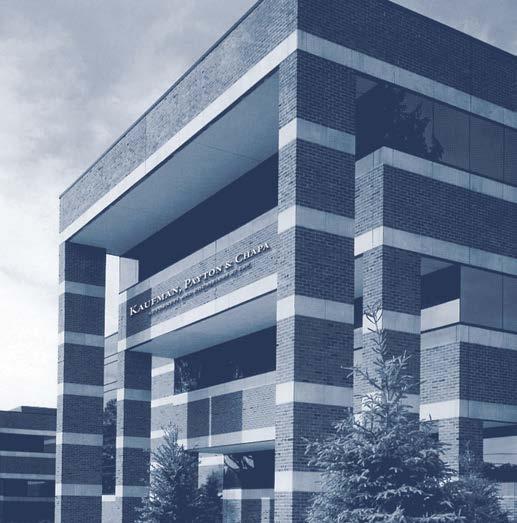

In the past year and a half, Max Homa has been playing golf in a way that makes it seem as if he’s got it all figured out.
The California native and professional golfer on the PGA Tour earned career victories Nos. 3 and 4 in the 2021-22 season, then kicked off the current season by winning the Fortinet Championship on Sept. 18 for the second straight year.


“Winning is so hard,” said Homa, Burns & Wilcox Brand Ambassador. “It feels great when it happens and means something each time.”
That was an impressive way to start a season after coming off a campaign in which Homa ranked fifth in the FedExCup standings, earning him a $2.75 million bonus.
Homa has been anything but an overnight success, though.
After joining the PGA Tour fresh off capturing the individual NCAA championship in 2013, Homa had some success and plenty of struggles, but he never gave up. Even though he lost his Tour card twice, he worked his way back with solid finishes on the Korn Ferry Tour — most recently in 2018.
And then, in 2019, Homa had his breakout moment when he won the Wells Fargo Championship for his first Tour victory as a 28-year-old.
Now firmly established as one of the elite players in the world, Homa recently enjoyed being one of six captain’s picks for the U.S. Presidents Cup Team that captured the title, going 4-0 in his matches.
Homa recently shared his thoughts about his accomplishments on Tour and his experience playing with his idol, Tiger Woods. Growing up in Southern California, what first attracted you to golf?
Max Homa: It was probably the tournament at Riviera (Country Club in Los Angeles), which used to be called the Nissan Open, but we called it the L.A. Open. Now it’s the Genesis Invitational. My parents would take me to the event so I could go see all the pros. And then after that, it was just Tiger Woods. And you ended up winning that tournament? That must have been amazing for you.
M.H.: I won it in 2021. I’ll never do anything that was as meaningful as that one for me.

You attended the University of California-Berkeley, where you won the NCAA Individual National Championship in 2013. Tell us what that win meant to you.
M.H.: It was just very validating. I was about to turn pro, so it was a humungous boost of confidence at the right time. Obviously, dipping your feet into the professional ranks is pretty scary. Knowing that I won the national championship, I felt like it just gave me a big boost and validated everything I had been working on.
GO-TO ON-COURSE SNACK: When I’m fortunate enough to have my wife travel with me, I’ll get a PB&J. When she’s not I usually just grab a (protein) bar of some sort. I’m too lazy to make anything.
FAVORITE SPORT THAT ISN’T GOLF: Baseball FAVORITE COURSE YOU’VE PLAYED: Riviera Country Club in Los Angeles
DREAM VACATION: Just having a vacation would be nice. I have this fantasy of going to the middle of nowhere for like two days with my wife and dog with no phone — 48 to 72 hours — to like Joshua Tree (National Park).
ANY PETS: A yellow lab, a girl named Scotty DREAM FOURSOME TO PLAY A ROUND WITH: My dream foursome is not a bunch of famous people. It’s my caddie Joe, my friend Peter and my buddy Stephen.
Looking back at your rookie year on the PGA Tour in 2015 — you made 12 cuts that year — what do you wish you could tell your younger self?
M.H.: Oh my, I’d write a book.
I think the most simple thing I’d say is: ‘Just keep doing what you’re doing and quit looking around.’ I’d spend some time realizing that I made it there for a reason, and I don’t need to change my whole game just because other people are doing things differently.
After the 2017 season, you lost your PGA Tour card for the second time in three years. Two years later, you won the Wells Fargo Championship. What was your turnaround strategy?
M.H.: The strategy was just to have a plan, as simple as that sounds. To find a plan as far as mechanics went and a practice schedule and then just stick to it and trust that it was going to eventually knock down that door.
Fast forward to this spring: You won the 2022 Wells Fargo Championship — your fourth career PGA Tour victory. Thinking back to your success as an amateur and collegiate and now a pro player, which win has meant the most to you and why?
M.H.: The L.A. one meant the most to me just because that was an emotional (win). For me, that’s kind of like a fifth major. That field was really good, and that golf course is one that I think is a standout golf course. Plus, they always say winning your first event is definitely hard, but the second one can be a bit harder and a bit more meaningful, because two-time PGA Tour winner, I feel like that sounds a lot less fluky. I felt like I showed I could do it multiple times and in a great field. That one meant a ton to me.
M.H.: I’m not sure. Someone always asks: ‘Do you love golf because you’ve been doing it so long?’ I would say probably yes.
I think I just love the competition the most. All those hours you spent working hard. You want to go see what that means. It’s fun to go nose to nose with another player who’s also working to prove that you’re better on that day.
There’s something about that in sports that’s always made me enjoy competing and working and just seeing how far you can get in the game.
You made three of the four cuts this year at the majors, including a T13 at the PGA Championship. What will it take for you to get into contention at more of those events?

M.H.: I realized at the PGA this year that I kind of figured it out a little bit as far as preparation went. A lot of it is just not being so hard on myself while preparing and realizing that my game doesn’t need to be perfect to go out there and play well.
What is your strategy for overcoming the challenges of a difficult course?
M.H.: They are all difficult. I lean on my caddie (Joe Greiner). He does all the work. He just tells me where to hit it. My caddie makes things very easy.
We know you are a big fan of Tiger Woods, and you had two rounds with him at the British Open this year. How was the experience?
M.H.: It was just surreal. The amount of people following him in our group was insane.
And to chat with somebody who is quite simply the reason I play golf … I mean that because in the early ’90s golf was still an ‘older man’s sport.’ He made it really cool. It was just cool to have the opportunity to go around the first golf course ever, really, with the guy who got me, even though he didn’t do it on purpose, he got me into the game of golf.
When we would practice or watch golf growing up, I’d always picture the opportunity to compete with Tiger Woods. It wasn’t just to be next to him. It was to beat him. But it’s definitely weird seeing your heroes in real life. ■
“The strategy was just to have a plan, as simple as that sounds. To find a plan ... and then just stick to it and trust that it was going to eventually knock down that door.”
– Max Homa, Five-time PGA Tour Winner and Burns & Wilcox Brand Ambassador




